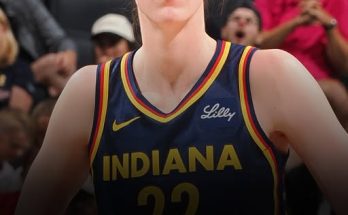The Indiana Pacers find themselves in a fascinating yet challenging position as they approach the upcoming season, a position that could have significant implications for their roster construction and team chemistry. One of the most pressing storylines currently emerging from their camp revolves around veteran forward James Johnson, a player who has become both a fan favorite and a respected locker room presence. While the organization has publicly acknowledged their admiration and appreciation for Johnson’s impact, a recent statement has made it clear that his future with the team is uncertain: “Right now, it could be challenging to find a spot for James as much as we want him back.” This single sentence has set off a wave of speculation and debate among Pacers fans and NBA observers alike, as they attempt to decipher what this could mean for both the team’s immediate outlook and Johnson’s career trajectory.
James Johnson is not just another player who quietly fills a roster spot. Over the course of his career, he has built a reputation as a versatile forward capable of defending multiple positions, bringing toughness and intensity to every possession, and serving as a mentor to younger players. For the Pacers, who have made strides in blending youth with veteran leadership, Johnson’s contributions extend far beyond the box score. He is known for his vocal leadership in the locker room, his willingness to embrace whatever role is asked of him, and his ability to set the tone in practices and games with his no-nonsense approach. Despite this, the Pacers’ roster constraints, financial considerations, and the influx of younger talent have complicated the decision-making process, potentially leaving a player of Johnson’s caliber without a clear spot on the team.
From a basketball perspective, the Pacers are entering a season with heightened expectations. Last year, they managed to take significant steps forward under the guidance of head coach Rick Carlisle, whose system has emphasized ball movement, pace, and defensive versatility. With Tyrese Haliburton emerging as one of the league’s brightest young stars, the Pacers have built a dynamic backcourt that thrives on creating scoring opportunities for teammates and pushing the tempo. The team’s front office, led by President of Basketball Operations Kevin Pritchard, has been working tirelessly to build a roster that not only complements Haliburton’s skill set but also positions the Pacers as a legitimate playoff contender in the Eastern Conference. This effort has meant acquiring new players, developing young talent, and carefully managing the limited roster spots available.
For James Johnson, the timing of these roster moves could not be more challenging. While his veteran presence is valued, the Pacers have to consider the long-term development of players like Bennedict Mathurin, Aaron Nesmith, and Jarace Walker, all of whom are expected to play meaningful minutes this season. The team also added free-agent signings and draft picks that have further crowded the rotation, particularly in the forward positions where Johnson typically plays. In the modern NBA, where versatility and three-point shooting are prized commodities, Johnson has proven capable but not elite in those areas, which can make it difficult for a team trying to maximize its offensive spacing and flexibility to justify keeping him over a younger, higher-upside player.
However, dismissing Johnson’s value purely on statistical or positional grounds would be a mistake. His presence has often served as a stabilizing force for the Pacers, especially during tough stretches of the season. Younger players frequently credit Johnson for his mentorship, noting that his guidance helps them navigate the rigors of an NBA season, from maintaining a professional mindset to understanding the nuances of defensive schemes. Carlisle himself has praised Johnson’s influence, calling him one of the most prepared and intelligent players he has ever coached. Yet, even with these glowing endorsements, the reality remains that NBA rosters are finite, and every decision carries ripple effects for the team’s success.
The Pacers’ front office has made it clear that they would like to keep Johnson if circumstances allow. The statement “Right now, it could be challenging to find a spot for James as much as we want him back” suggests that the door is not fully closed, but rather that the team is waiting to see how the rest of the offseason and training camp unfold. Injuries, trades, or unexpected roster changes could open a pathway for Johnson to return, but nothing is guaranteed. For Johnson, who has played for multiple teams throughout his career, this is a familiar situation. His journey in the NBA has been one defined by resilience, adaptability, and an ability to carve out a niche regardless of the circumstances. Whether he remains with the Pacers or finds a new home elsewhere, his experience and reputation will likely ensure that he remains in the league.
It is worth examining why the Pacers might be struggling to find space for Johnson in the first place. One major factor is the depth they have accumulated in the frontcourt. Myles Turner remains the team’s anchor in the paint, providing elite shot-blocking and rim protection while also expanding his offensive game to include reliable three-point shooting. Behind Turner, the Pacers have invested in younger players who can contribute immediately or have the potential to grow into larger roles. Jarace Walker, for example, is a highly touted prospect whose defensive versatility and athleticism make him a natural candidate to eat up minutes at the forward spot. Similarly, the team’s acquisition of Obi Toppin has added another dynamic forward who can stretch the floor and bring energy in transition. With players like Isaiah Jackson also vying for playing time, the Pacers simply have more bodies than available minutes.
Another factor is the evolution of the NBA itself. Teams are increasingly looking for players who can space the floor and guard multiple positions without sacrificing offensive output. Johnson, while a strong defender and capable playmaker, has never been a consistent outside shooter. His career three-point percentage hovers in the low 30s, which can limit his effectiveness in five-out offensive schemes that rely on every player being a credible threat from beyond the arc. This is not to say that Johnson cannot contribute in today’s NBA—his physicality, basketball IQ, and experience remain valuable assets—but rather that the Pacers are trying to balance traditional intangibles with modern-day analytics and spacing requirements.
From a financial standpoint, the Pacers are also navigating a delicate balance. With Haliburton’s extension and other young players eventually becoming eligible for new contracts, the team must manage its salary cap wisely. While Johnson would likely command a modest salary given his veteran status, every dollar and roster spot matters when constructing a competitive team. The front office may be holding off on committing to Johnson until they have a clearer picture of their overall financial and roster flexibility. For instance, if the Pacers pursue another trade or need to absorb a contract during the season, having an open roster spot could be advantageous.
Fans of the Pacers have been vocal about their desire to see Johnson return. Social media has been flooded with comments praising his leadership, toughness, and the way he represents the team on and off the court. Some argue that players like Johnson are essential for playoff runs, where experience and mental toughness often make the difference in close games. It’s a sentiment echoed by former teammates and even opponents, many of whom have lauded Johnson’s ability to do the “dirty work” that doesn’t always show up in the stat sheet but is crucial for winning basketball. For a team like the Pacers, which is trying to bridge the gap between being a young, up-and-coming squad and a serious contender, having a player like Johnson could be invaluable.
If Johnson does not return to the Pacers, it raises interesting questions about where he might land next. Given his skill set and reputation, there are several teams that could benefit from his presence, particularly those with championship aspirations looking for a veteran who can provide depth and leadership. Teams like the Miami Heat, Milwaukee Bucks, or even the Los Angeles Lakers have historically valued players with Johnson’s toughness and experience. While it’s too early to speculate on his next destination, it is unlikely that a player of his caliber will remain unsigned for long, especially once injuries and mid-season roster adjustments come into play.
For now, Johnson’s future with the Pacers remains in limbo. The team’s statement suggests a genuine desire to bring him back, but also an acknowledgment of the logistical challenges that stand in the way. Training camp and preseason will be critical in determining whether those challenges can be overcome. If a younger player struggles, or if the team decides that Johnson’s intangibles outweigh the benefits of a developmental roster spot, a reunion could very well be on the horizon. Until then, both the Pacers and Johnson will have to navigate this period of uncertainty with patience and professionalism.
The situation also highlights a broader theme in the NBA: the tension between developing young talent and maintaining veteran leadership. Teams like the Pacers, who are not only focused on competing now but also building for the future, must constantly weigh the value of a veteran presence against the need to give younger players the opportunity to grow. While the NBA has always been a league of constant change, the rise of analytics and player development programs has made these decisions even more complex. Johnson’s case is a perfect example of this dynamic at work.


